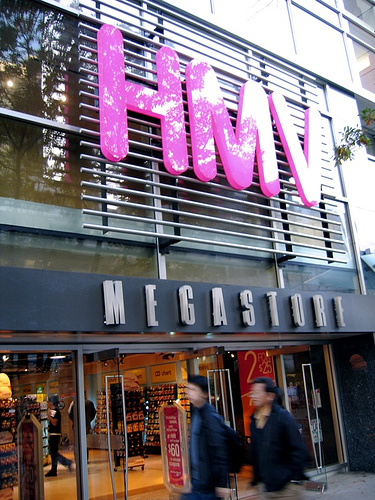Date Posted: July 13, 2011
Print Edition: July 8, 2011
By Nick Ubels (The Cascade) – Email
 Last week it was announced that HMV Canada, the only national specialty entertainment retailer in the country, had been sold to a British restructuring firm. According to a June 27 press release, Hilco UK plans to invest $25 million in the “continued evolution of its business.”
Last week it was announced that HMV Canada, the only national specialty entertainment retailer in the country, had been sold to a British restructuring firm. According to a June 27 press release, Hilco UK plans to invest $25 million in the “continued evolution of its business.”
While Hilco CEO Paul McGowan insists that the company will be rolling out a strategy that will increase the lifespan of what is referred to as the “residual” hard-copy music and film market, it is clear that the ultimate goal is the transition to digital streaming content and accessories sales.
Admittedly, the writing on the wall might as well have been lit up with a neon sign over the past few months. Video rental giant Blockbuster Canada was recently pushed into receivership by its U.S. counterpart, forcing the closure of 146 locations across Canada. HMV’s Abbotsford location was shut down along with five other underperforming locations in the past month. These were all strong indicators that the Canadian entertainment retailer might be experiencing some serious structural problems, but I’m still a little heartbroken over what the impending loss means for the average entertainment junky like myself.
For movie fans, the closure of Canada’s premiere video rental chain Blockbuster in conjunction with the transition away from the sale of hard-copy content at HMV will leave few options for home viewing. Streaming content providers like Netflix Canada offer a cheap alternative at 8 dollars per month, but the selection – of both new titles and classics – is still fairly limited. Star Wars? Annie Hall? The Godfather? All unavailable. Independent video stores, while offering a greater variety of titles, can be more expensive and stock fewer copies of the latest releases than a chain like Blockbuster.
For music fans, the problem isn’t so much the availability of content as it is the audio quality. Most digital providers sell MP3s with a bit rate of 128 to 192 kb/s while CDs contain uncompressed audio with a bit rate of 1411.2 kb/s. That’s seven times greater than that of an average MP3. In order to reduce the size of lossless CD quality files, MP3s trim off high and low frequencies and greatly diminish a recording’s dynamic range. While the MP3 format is both convenient and perfectly adequate for working out or listening on the fly, it simply does not cut it for critical listening and sounds painfully thin on any decent sound system.
It is remarkably odd that while the demand for higher quality video content continues to increase as seen in the embrace of High Definition formats such as BluRay, music seems to be headed in the opposite direction. While vinyl is making a comeback among some audiophiles, the general trend is toward low cost, compact digital formats that curb the quality of one’s listening experience.
There is a certain romance about the record store that is dangerously close to extinction. These days, the only successful independent music stores are located in major city centres, making it more and more difficult to partake in that time-honoured tradition of browsing a record shop, searching for some obscure gem and getting recommendations from staff members and other customers who are just as eager to talk about music as you are. It is an experience that, much like holding a CD or LP in your hands, cannot be duplicated digitally.


